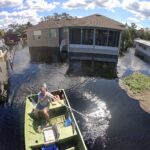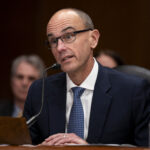Florida property/catastrophe reinsurance rates increased by 15 percent at the June 1, 2009, renewal, compared to a decline of 15 percent a year ago, according to reinsurance specialist Guy Carpenter & Co.
In a new briefing on Florda reinsurance trends, Guy Carpenter said this increase represents a more modest increase than the 20 percent rise anticipated by many, and is largely consistent with the overall rate trend for this year, which saw 10 to 14 percent increases for U.S. national reinsurers at the April 1, 2009, renewal.
According to the briefing, reinsurance capacity was more limited at the June 1 renewal than in 2007 and 2008. Though capital was constrained as a result of the global financial crisis, the shortage did not result in severe rate spikes as it did in 2006, as increased demand was modest enough not to exceed supply.
Guy Carpenter said a decline of $2 billion in the Florida Hurricane Catastrophe Fund’s (FHCF’s) upper temporary coverage limits (TICL) layer and liquidity needs within the rest of the TICL’s upper layer led to an increase in demand for private reinsurance of 5 to 10 percent. Though there was sufficient capacity to meet cedents’ needs, prices were pushed higher as a result, according to the briefing.
“Despite predictions of more substantial Florida rate increases this year, the June 1 renewal is remarkably consistent with the broader property/casualty trends we saw at the April 1 renewal,” said Lara Mowery, Property Specialty Leader, Guy Carpenter. “In fact, given the unique characteristics of the Florida market, a 15 percent rate increase suggests that capacity conditions have not appreciably worsened through 2009 and that the market has, in fact, stabilized to a certain degree.”
Firm order terms (FOTs) rose 10 to 14 percent year-over-year for lower layers and 14 percent to 18 percent for higher layers. Quoting was tight – with an average range of -3 percent to 3 percent around the average quote.
Pricing shifted back to 2007 levels on a risk-adjusted basis. Lower layer FOTs increased by an average of 11 percent in 2009, compared to declines of 11 and 15 percent in 2008 and 2007, respectively. For middle layers, FOTs gained 14 percent, as compared to -15 percent and -17 percent in the two previous years. Higher layers rose 18 percent, in stark contrast to -19 percent in 2008 and -23 percent in 2007.
In terms of markets trends, the briefing reports that traditional capacity declined by 10 percent at the June 1, 2009 renewal. This drop, coupled with a decline in hedge fund-supplied capacity, had many cedents concerned about a lack of sufficient capacity. These anxieties were further exacerbated by the decline in the TICL. In the end, however, there was sufficient capacity in the market to meet cedents’ needs.
Many Florida insurers posted net losses last year while seeing net exposure increase because of a reduction in FHCF coverage and an increase in the FHCF retention.
Adding to the Florida renewal season’s stability in the last few weeks were the improving conditions and the increased volume in the tax-exempt municipal bond market leading to an increase in the FHCF’s post-event bonding capacity estimate to $8 billion from $3 billion in October 2008, Guy Carpenter said.
Mowery said the immediate outlook in the Florida market is stable, although a major event could change this.
“The Florida market is always watched closely, and we would expect the current trend — manageable rate increases driven by limited but available capacity — to extend through the July 1, 2009, renewal, barring a mega-catastrophe, a new round of turbulence in the capital markets, or other extraordinary circumstances,” she said.
Topics Florida Pricing Trends Reinsurance
Was this article valuable?
Here are more articles you may enjoy.


 State Insurance Legislators ‘Greatly Disturbed’ by Trump AI Regulation Order
State Insurance Legislators ‘Greatly Disturbed’ by Trump AI Regulation Order  US House Bill Aims to End Private Flood Insurance Coverage Penalty
US House Bill Aims to End Private Flood Insurance Coverage Penalty  McKinsey Plots Thousands of Job Cuts in Slowdown for Consulting Industry
McKinsey Plots Thousands of Job Cuts in Slowdown for Consulting Industry  Insurance Covers Settlement Paid by Stocks Instead of Money: Delaware High Court
Insurance Covers Settlement Paid by Stocks Instead of Money: Delaware High Court 

